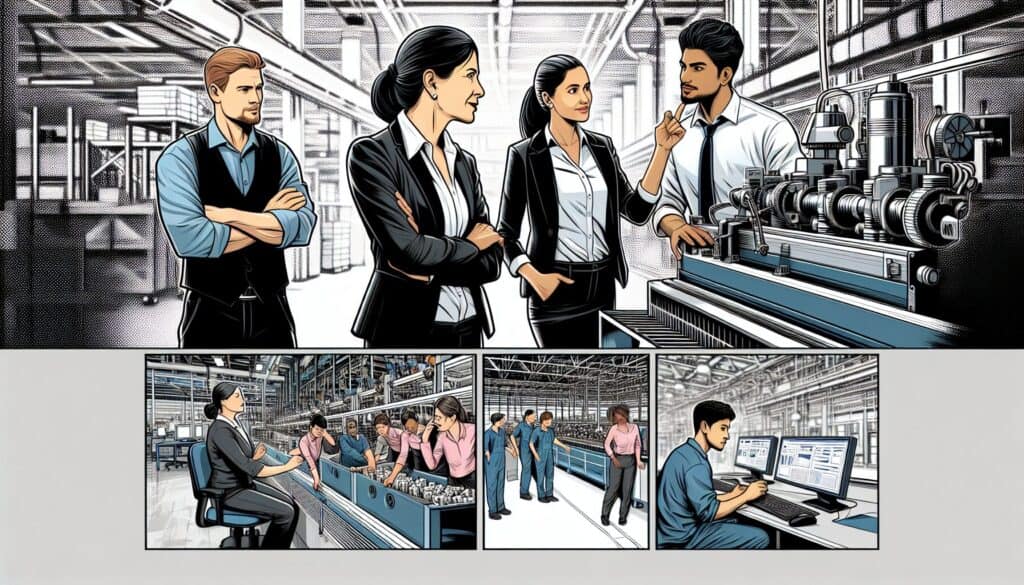A Lean management practice where managers and leaders go to the “gemba” (the actual place where work is done, e.g., the factory floor, the office) to observe processes, ingaggiare with employees, understand current conditions, and identify opportunities for improvement.
- Metodologie: Clienti e marketing, Economia, Progettazione del prodotto
Gemba Walks

Gemba Walks
- Metodologia agile, Miglioramento continuo, Gemba, Kaizen, Produzione snella, Miglioramento dei processi, Mappatura dei processi, Mappatura del flusso di valore, Strategie di eliminazione dei rifiuti
Obiettivo:
Come si usa:
- Involves physically going to the workspace, observing the work being performed, asking questions to understand the process and any challenges (focusing on "what" and "why," not "who"), and showing respect to the people doing the work. The goal is to see reality, not to immediately solve or blame.
Professionisti
- Provides firsthand understanding of processes and challenges; Fosters better communication and engagement with employees; Helps identify waste and improvement opportunities that might not be visible from a distance; Promotes a culture of respect and continuous improvement.
Contro
- Can be ineffective if not done with the right purpose (observation and understanding, not immediate judgment or problem-solving); May make employees uncomfortable if they feel scrutinized; Requires time commitment from leadership.
Categorie:
- Lean Sigma, Produzione, Risoluzione dei problemi, Gestione del progetto, Qualità
Ideale per:
- Gaining direct insights into how work is actually performed, engaging with front-line staff, and identifying improvement opportunities by observing processes in their real context.
Gemba Walks find strong applications across various industries such as manufacturing, healthcare, software development, and service sectors, where iterative improvement and efficiency are desired. This methodology is typically employed during project phases focused on process mapping, quality assurance, and continuous improvement initiatives. It ideally involves team leaders, managers, and engineers who actively engage with frontline employees to understand their daily challenges and workflow intricacies. For instance, in a manufacturing setting, a manager might visit the assembly line to observe real-time operations, identify bottlenecks, or discover redundant steps that could be optimized. Similarly, in healthcare, a Gemba Walk may involve healthcare administrators observing nursing practices in a unit, leading to enhanced patient care strategies. This participative approach allows for the capturing of tacit knowledge that is often overlooked, as it places value on the perspectives of those directly involved in the processes. In educational contexts, faculties can adopt this technique to assess classroom dynamics, thereby informing curriculum designs. Promoting a culture of open dialogue through Gemba Walks helps break down silos, building trust between management and frontline workers, which in the long term supports a more collaborative environment for problem-solving and innovation.
Fasi chiave di questa metodologia
- Go to the Gemba, the actual place where work is done.
- Observe the work processes in action without interfering.
- Ask questions focused on "what" and "why" to understand processes.
- Listen actively and engage with frontline staff to gather their perspectives.
- Take note of any observed challenges or inefficiencies in the process.
- Show respect for workers and acknowledge their contributions.
Suggerimenti per i professionisti
- Utilize open-ended questions during Gemba Walks to encourage employees to share their thoughts and experiences without steering the conversation.
- Take a multi-disciplinary approach by involving team members from various functions to obtain diverse viewpoints on the observed processes.
- Document observations in real-time and categorize them into themes post-visit to facilitate more structured analysis and action planning.
Leggere e confrontare diverse metodologie, raccomandiamo il
> Ampio archivio di metodologie <
insieme ad altre 400 metodologie.
I vostri commenti su questa metodologia o ulteriori informazioni sono benvenuti su sezione commenti qui sotto ↓ , così come tutte le idee o i link relativi all'ingegneria.
Contesto storico
1950
1980
1980
1986
1994
1995
2000
1960
1980
1983
1990
1995
2000
2010
(se la data non è nota o non è rilevante, ad esempio "meccanica dei fluidi", viene fornita una stima approssimativa della sua notevole comparsa)














Post correlati
Questionari sul disagio muscoloscheletrico
Test multivariati (MVT)
Analisi di regressione multipla
Sistemi di cattura del movimento
Metodo MoSCoW
Test mediano dell'umore